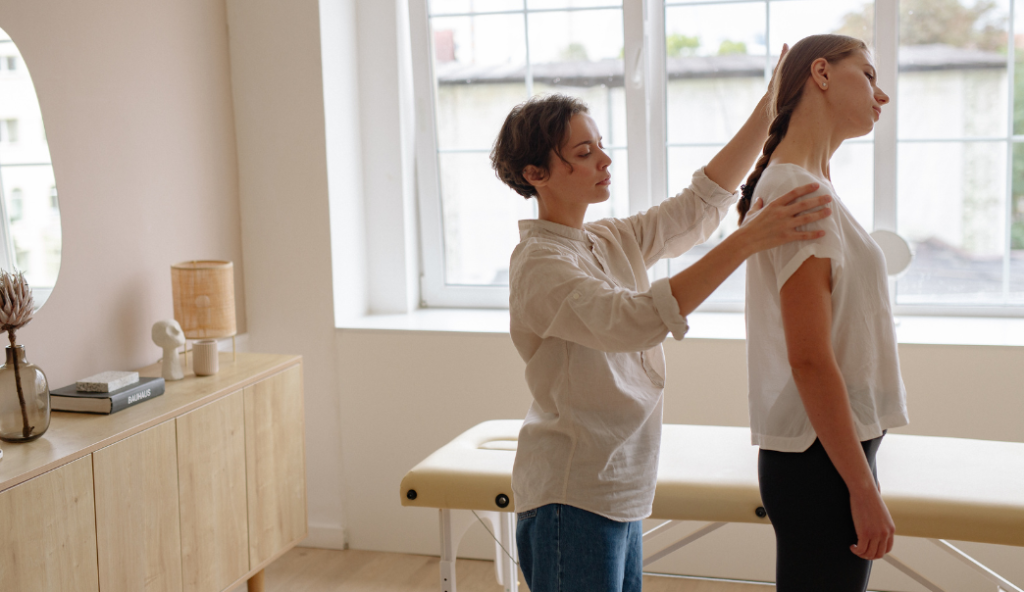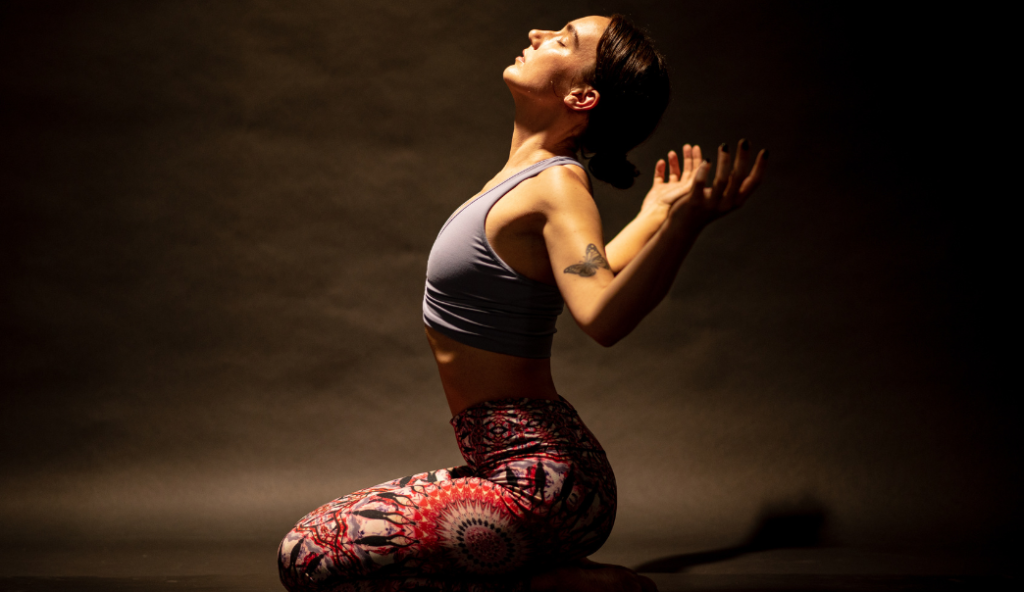In the world of athletics, every competitive edge counts. Athletes constantly seek ways to optimize their performance, from training regimens to diet plans. However, posture is one often overlooked factor that can significantly impact athletic prowess. The way an athlete holds can profoundly affect their overall performance and potential for injury. In this article, we will delve into the intricacies of posture and examine its significant role in athletic performance.
Anatomical Insights: How Posture Affects the Body
Before we delve into the impact of posture on athletic performance, it’s crucial to understand how posture affects the body. Proper posture aligns the spine and optimally distributes weight, creating an efficient platform for movement. When an athlete maintains good posture, muscles and joints are placed in their ideal positions, allowing optimal biomechanical function.
Poor posture, on the other hand, can disrupt this delicate equilibrium. Slouching, rounding of the shoulders, or excessive kyphosis can lead to muscle imbalances, hinder range of motion, and compromise stability. Not only can this decrease athletic performance, but it can also increase the risk of injury.
The Relationship Between Posture and Muscular Imbalances
One key aspect of how posture affects the body is its impact on muscular imbalances. Muscles work synergistically, with some contracting as others relax to facilitate movement. However, poor posture can throw this delicate balance off-kilter, leading to excessive strain on specific muscles and underutilization of others. This can result in muscular imbalances, which can significantly impede athletic performance.
For example, an athlete with rounded shoulders may experience tightness and overactivity in the chest and front shoulder muscles while the muscles in their upper back become weak and inhibited. This muscular imbalance compromises proper movement patterns and decreases strength and power output.
The Effects of Poor Posture on Joint Mechanics
In addition to muscular imbalances, poor posture also impacts joint mechanics. Misalignment in the spine and extremities can lead to abnormal loading patterns, ultimately placing excessive stress on joints. Over time, this can contribute to joint degeneration, inflammation, and other musculoskeletal issues.
For example, an athlete with a forward head posture, where the head is positioned in front of the shoulders, may experience increased stress on the cervical spine. This additional strain can result in tension headaches, decreased neck mobility, and nerve impingement. In an athletic setting, compromised joint mechanics can hinder performance and increase the likelihood of injury.
Common Postural Issues in Athletes and Their Consequences
Now that we understand the importance of posture, let’s explore some common postural issues prevalent among athletes and the resulting consequences.
Forward Head Posture: A Common Culprit
One of the athletes’ most prevalent postural issues is forward head posture. This occurs when the head is positioned in front of the shoulders, increasing the cervical spine load. Athletes who frequently participate in activities that require them to look down, such as swimmers or cyclists, are particularly susceptible to developing this postural imbalance.
Consequences of forward head posture include decreased range of motion, increased risk of cervical spine injuries, and decreased overall athletic performance. The strain placed on the neck muscles to support the head’s weight can also contribute to tension headaches and muscular discomfort.
Shoulder Imbalances: Affecting Upper Body Function
Another common postural issue among athletes is shoulder imbalances. These imbalances can manifest as rounded shoulders, protracted scapulae (shoulder blades), or asymmetrical shoulder height. Athletes who frequently engage in repetitive overhead movements, such as baseball pitchers or tennis players, may be particularly prone to developing these imbalances.
Shoulder imbalances can dramatically impact upper body function, compromising overhead reaching, throwing accuracy, and power generation. The risk of shoulder injuries, such as rotator cuff tears or impingement syndromes, also increases substantially in athletes with poor shoulder posture.
Techniques to Assess and Improve Postural Alignment
Now that we have a comprehensive understanding of the impact of posture on athletic performance, let’s explore techniques that can help assess and improve postural alignment.
Postural Assessment: A Foundation for Improvement
The first step in addressing postural issues is to perform a thorough postural assessment. This assessment involves analyzing the alignment and positioning of key anatomical landmarks, such as the feet, knees, hips, shoulders, and head. Clinicians and coaches can identify imbalances and asymmetries that must be addressed by carefully observing an athlete’s posture from various angles.
Furthermore, technology such as motion analysis systems and force plates can provide objective measurements, enhancing the accuracy of the assessment process. This comprehensive evaluation is a foundation for developing an individualized plan to improve postural alignment.
Corrective Exercises: Strengthening the Weak and Stretching the Tight
Corrective exercises play a vital role in improving postural alignment. Based on the findings from the postural assessment, specific exercises can be prescribed to address muscular imbalances and promote optimal alignment.
Strengthening exercises are used to target weak muscles, helping to restore proper muscle balance and improve posture. For example, an athlete with rounded shoulders may benefit from exercises that strengthen the upper back muscles, such as rows or scapular retractions.
On the other hand, stretching exercises release tight muscles and improve flexibility. For instance, athletes with tight chest muscles may benefit from stretches that open the chest and mobilize the thoracic spine.
Role of Chiropractic Care in Correcting Postural Imbalances
While exercises can be beneficial for improving posture, chiropractic care can also play a pivotal role in correcting postural imbalances that hinder athletic performance.
Hands-On Manual Adjustments: Restoring Proper Alignment
Chiropractors are trained to identify and address structural misalignments contributing to poor posture. Through hands-on manual adjustments, chiropractors can positively influence joint alignment and mobility, relieving stress on muscles and joints.
By restoring proper alignment, chiropractic care enhances athletic performance by optimizing movement patterns, reducing the risk of injury, and improving overall mechanical efficiency. Athletes receiving regular chiropractic adjustments often report improved posture, joint function, and athletic performance.
Complementary Therapies: Maximizing Postural Benefits
In addition to manual adjustments, chiropractors may employ complementary therapies to maximize the benefits of chiropractic care. These therapies can include soft tissue techniques, such as myofascial or active release therapy, which help address muscle imbalances and tension.
Furthermore, modalities like ultrasound or electrical stimulation may reduce inflammation, promote tissue healing, and enhance the effectiveness of corrective exercises. These additional therapies can be valuable tools in correcting postural imbalances and optimizing athletic performance.

Exercises and Stretches for Better Postural Health
Now that we understand the importance of posture and the role of chiropractic care, let’s explore some specific exercises and stretches that can promote better postural health.
Prone Cobra: Activating the Upper Back Muscles
The prone cobra is an excellent exercise for activating the muscles of the upper back, which are often weak in individuals with poor posture. To perform this exercise, lie face down on a mat, extend your arms in front of you, and lift your chest while squeezing your shoulder blades together. Hold for a few seconds before lowering back down. Repeat for several repetitions.
Child’s Pose: Opening Up the Chest and Stretching the Spine
An effective stretch for releasing tension in the chest and improving thoracic spine mobility is the child’s pose. Start by kneeling on the floor, then lower your hips towards your heels while reaching your arms overhead. Allow your forehead to rest on the floor and relax into the stretch. Hold this position for several deep breaths, feeling the stretch in your upper back and chest.
The Connection Between Posture and Injury Prevention
By now, it is clear that good posture is crucial for optimal athletic performance and injury prevention. Proper alignment throughout training and competition can significantly reduce the risk of acute and chronic injuries.
Gait Analysis: Optimizing Movement Patterns
One valuable tool for injury prevention and performance enhancement is gait analysis. This involves thoroughly evaluating an athlete’s walking or running pattern to identify abnormalities or dysfunctions. By analyzing the movement of the feet, ankles, knees, hips, and spine, gait analysis can help pinpoint areas of weakness or imbalance that may contribute to injury.
Based on the findings, corrective exercises, orthotics, or modifications to training techniques can be implemented to restore proper movement patterns and reduce the risk of injury associated with faulty posture.
Stress Fracture Prevention: Focusing on Biomechanics
Another aspect of injury prevention is addressing biomechanical factors that can increase the risk of stress fractures. Stress fractures commonly occur in athletes with poor lower extremity alignment or excessive foot pronation (rolling inward). By evaluating an athlete’s posture and gait, strategies can be implemented to minimize these risk factors.
These strategies may include modifying footwear, utilizing supportive orthotics, or prescribing corrective exercises that promote proper alignment and foot stability. By taking proactive measures to improve posture and address biomechanical issues, athletes can significantly reduce the likelihood of developing debilitating stress fractures.

Enhancing Endurance and Power Through Good Posture
Good posture benefits injury prevention and musculoskeletal health and directly impacts athleticism in terms of endurance and power.
The Efficiency of Movement: Endurance Benefits
Optimal posture allows for a more efficient use of energy during athletic activities. When the body is correctly aligned, muscles are recruited in a way that maximizes power output while minimizing energy expenditure. This efficiency translates to enhanced endurance, as athletes can sustain higher performance levels for longer durations without fatigue.
Power Generation: Unlocking Athletic Potential
Another way that good posture enhances athletic performance is by unlocking an athlete’s full power generation potential. Proper alignment ensures muscles are engaged and functioning optimally, allowing for maximal force production. Good posture provides a solid foundation for generating raw athletic power from explosive jumps to powerful throwing motions.
Long-Term Benefits of Maintaining Good Posture for Athletes
Maintaining good posture is not just a short-term fix; it provides many long-term benefits for athletes.
Preventing Chronic Pain and Degenerative Conditions
By prioritizing good posture throughout an athlete’s career, they can reduce the risk of developing chronic pain and degenerative conditions later in life. Proper alignment minimizes excessive wear and tear on joints, preventing early-onset arthritis and other degenerative conditions.
Enhancing Overall Well-being and Quality of Life
Beyond athletics, good posture contributes to overall well-being and quality of life. It promotes optimal organ function, improves breathing efficiency, and increases self-confidence. Athletes who maintain good posture excel in their respective sports and lead healthier, more fulfilling lives.
Exploring the impact of posture on athletic performance reveals its significant role in maximizing an athlete’s potential. From its effects on muscular imbalances and joint mechanics to its connection to injury prevention and overall well-being, maintaining good posture should be a priority for every athlete. Incorporating postural assessment, corrective exercises, chiropractic care, and other strategies outlined in this article can help athletes optimize their performance and unlock their true athletic potential.



